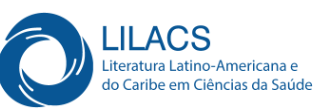A influência da aversão à perda na decisão de se sobrecarregar no trabalho
DOI:
https://doi.org/10.5433/2236-6407.2020v11n2p166Palavras-chave:
stress ocupacional, tomada de decisão, aversãoResumo
A presente pesquisa teve como objetivo avaliar o papel moderador do burnout na relação entre aversão à perda e tomada de decisão de se sobrecarregar no trabalho. Um total de 128 profissionais, com idades acima de 18 anos e inseridos no mercado de trabalho, responderam a uma medida de burnout e avaliaram um cenário de sobrecarga no trabalho. Verificou-se um efeito da aversão à perda na decisão de se sobrecarregar no trabalho, mas o burnout não moderou essa relação. Variáveis sociodemográficas também não influenciaram na tomada de decisão. Esse estudo evidencia o potencial heurístico da aversão à perda como mecanismo automático que pode influenciar a decisão de se sobrecarregar no trabalho. Assim, deve-se ter cautela ao expor indivíduos em processos de decisões visto que isso pode impactar negativamente tanto para o próprio indivíduo (no curto prazo), quanto para a própria organização (no médio e longo prazo).
Downloads
Referências
Alarcon, G. M. (2011). A meta-analysis of burnout with job demands, resources, and attitudes. Journal of Vocational Behavior, 79(2), 549-562. doi:10.1016/j.jvb.2011.03.007
Aloha, K., Toppinen-Tanner, S. & Seppänen, J. (2017). Interventions to alleviate burnout symptoms and to support return to work among employees with burnout: Systematic review and meta-analysis. Burnout Research, 4, 1-11. doi:10.1016/j.burn.2017.02.001
Aronsson, G., Theorell, T., Grape, T., Hammarström, G., Hogstedt, C., … Hall, C. (2017). A systematic review including meta-analysis of work environment and burnout symptoms. BMC Public Health, 17, 1-13. doi:10.1186/s12889-017-4153-7
Barberis, N. C. (2013). Thirty years of Prospect Theory in economics: A review and assessment. Journal of Economic Perspectives, 27(1), 173-196. doi:10.1257/jep.27.1.173
Benevides-Silva, A. M. T. (2002). Burnout: O proceso de adoecer pelo trabalho. In A. M. T. Benevides-Silva (Ed.), Burnout: quando o trabalho ameaça o bem-estar do trabalhador (pp. 21-91). São Paulo, SP: Casa do Psicólogo.
Boyce, C. J., Wood, A. M., & Ferguson, E. (2016). Individual differences in loss aversion: Conscientiousness predicts how life satisfaction responds to losses versus gains in income. Personality and Social Psychology Bulletin, 42(4), 471-484. doi:10.1177/0146167216634060
Canessa, N., Crespi, C., Baud-Bovy, G., Dodich, A., Falini, A., Antonellis, G., & Cappa, S. F. (2017). Neural markers of loss aversion in resting-state brain activity. NeuroImage, 146, 257-265. doi:10.1016/j.neuroimage.2016.11.050
Carlotto, M. S., Dias, S. R. da S., Batista, J. B. V., & Diehl, L. (2015). O papel mediador da autoeficácia na relação entre a sobrecarga de trabalho e as dimensões de Burnout em professores. Psico-USF, 20(1), 13-23. doi:10.1590/1413-82712015200102
Carrasco, H., Martínez-Tur, V., Peiró, J. M., García-Buades, E., & Moliner, C. (2011). Service climate and display of employees' positive emotions: The mediating role of burnout and engagement in services. Psychologica, 55, 229-253.
Dalcin, L., & Carlotto, M. S. (2018). Síndrome de burnout em professores no Brasil: Considerações para uma agenda de pesquisa. Psicologia em Revista, 23(2), 745-770. doi:10.5752/P.1678-9563.2017v23n2p745-770
De Francisco, C., Arce, C., Vílchez, M. del P., & Vales, Á. (2016). Antecedents and consequences of burnout in athletes: Perceived stress and depression. International Journal of Clinical and Health Psychology, 16(3), 239-246. doi:10.1016/j.ijchp.2016.04.001
Demerouli, E., Backer, A. B., Nachreineir, F., & Shaufeli, W. B. (2001). The job demands-resouces model of burnout. Journal of Applied Psychology, 86(3) 499-512. doi:10.1037/0021-9010.86.3.499
Dreison, K. C., Luther, L., Bonfils, K. A., Sliter, M. T., McGrew, J. H., & Salyers, M. P. (2018). Job burnout in mental health providers: A meta-analysis of 35 years of intervention research. Journal of Occupational Health Psychology, 23(1), 18-30. doi:10.1037/ocp0000047
Fogarty, T. J., Singh, J., Rhoads, G. K., & Moore, R. K. (2000). Antecedents and consequences of burnout in accounting: Beyond the role stress model. Behavioral Research in Accounting, 13, 31-67.
Füllbrunn, S. C., & Luhan, W. J. (2017). Decision making for others: The case of loss aversion. Economics Letters, 161, 154-156. doi:10.1016/j.econlet.2017.09.037
Grolleau, G., Kocher, M. G., & Sutan, A. (2016). Cheating and loss aversion: Do people cheat more to avoid a loss? Management Science, 62(12), 3428-3438. doi:10.1287/mnsc.2015.2313
Heilman, R. L., Green, E. P., Reddy, K. S., Moss, A., & Kaplan, B. (2017). Potential impact of risk and loss aversion on the process of accepting kidneys for transplantation. Transplantation, 101(7), 1514-1517. doi:10.1097/TP.0000000000001715
Highhouse, S. (1997). Understanding and improving job-finalist choice: The relevance of behavioral decision research. Human Resource Management Review, 7(4), 449-470. doi:10.1016/S1053-4822(97)90029-2
Highhouse, S., & Johnson, M. A. (1996). Gain/Loss asymmetry and riskless choice: Loss Aversion in choices among job finalists. Organizational Behavior and Human Decision Processes, 68(3), 225-233. doi:10.1006/obhd.1996.0101
Hofstede, G. (1980). Culture's consequences comparing values, behaviors, institutes and organizations across nations. Beverly Hills: Sage.
Hyeda, A., & Handar, Z. (2011). Avaliação da produtividade na síndrome de Burnout. Revista Brasileira de Medicina do Trabalho, 9(2), 78-84.
Kahneman, D. (2012). Rápido e devagar: duas formas de pensar. Rio de Janeiro, RJ: Objetiva.
Mannor, M. J., Wowak, A. J., Bartkus, V. O., & Gomez-Mejia, L. R. (2016). Heavy lies the crown? How job anxiety affects top executive decision making in gain and loss contexts. Strategic Management Journal, 37(9), 1968-1989. doi:10.1002/smj.2425
Maslach, C., & Jackson, S. (1981). The Maslach Burnout Inventory. Palo Alto, CA: Consulting Psychologists Press.
Maslach, C., & Leiter, M. P. (2015). Editorial: It's time to take action on burnout. Burnout Research, 1, 1-2. doi: 10.1016/j.burn.2015.05.002
Maslach, C., Schaufeli, W. B., & Leiter, M. P. (2001). Job burnout. Annual Review of Psychology, 52(1), 397-422. doi:10.1146/annurev.psych.52.1.397
Modesto, J. G. N. (2018). "Por que corruptos são corruptos?": Propositura e apresentação de evidências do Modelo Analítico da Corrupção. Brasília, DF: Universidade de Brasília.
Pettigrew, T. F. (2018). The emergence of Contextual Social Psychology. Personality and Social Psychology Bulletin, 44(7), 963-971. doi:10.1177/0146167218756033
Schaufeli, W. B., Leiter, M. P., & Maslach, C. (2009). Burnout: 35 years of research and practice. Career Development International, 14 (3), 204-220. doi:10.1108/13620430910966406
Schindler, S., & Pfattheicher, S. (2017). The frame of the game: Loss-framing increases dishonest behavior. Journal of Experimental Social Psychology, 69, 172-177. doi:10.1016/j.jesp.2016.09.009
Schuster, M. D. S., & Dias, V. D. V. (2018). Oldenburg Burnout Inventory-validação de uma nova forma de mensurar Burnout no Brasil. Ciência & Saúde Coletiva, 23, 553-562. doi:10.1590/1413-81232018232.27952015.
Sokol-Hessner, P., & Rutledge, R. B. (2019). The psychological and neural basis of loss aversion. Current Directions in Psychological Science, 28(1), 20-27. doi:10.1177/0963721418806510
Sonnentag, S., & Fritz, C. (2007). The Recovery Experience Questionnaire: Development and validation of a measure for assessing recuperation and unwinding from work. Journal of Occupational Health Psychology, 12(3), 204-221. doi:10.1037/1076-8998.12.3.204
Squires, A., Finlayson, C., Gerchow, L., Cimiotti, J. P., Matthews, A. …. Sermeus, W. (2014). Methodological considerations when translating "burnout". Burnout Research, 1(2), 59-68. doi:10.1016/j.burn.2014.07.001
Tamayo, M. R., & Tróccoli, B. T. (2009). Construção e validação fatorial da Escala de Caracterização do Burnout (ECB). Estudos de Psicologia, 14(3), 213-221. doi:10.1590/S1413-294X2009000300005
Tversky, A., & Kahneman, D. (1992). Advances in prospect theory: Cumulative representation of uncertainty. Journal of Risk and Uncertainty, 5(4), 297-323. doi:10.1007/BF00122574
Valle, M. A., & Ruz, G. A. (2015). Turnover prediction in a call center: Behavioral evidence of loss aversion using random forest and naïve bayes algorithms. Applied Artificial Intelligence, 29(9), 923-942. doi:10.1080/08839514.2015.1082282
Walasek, L., & Stewart, N. (2015). How to make loss aversion disappear and reverse: Tests of the decision by sampling origin of loss aversion. Journal of Experimental Psychology: General, 144(1), 7-11. doi:10.1037/xge0000039
Wang, M., Rieger, M. O., & Hens, T. (2017). The impact of culture on loss aversion. Journal of Behavioral Decision Making, 30(2), 270-281. doi:10.1002/bdm.1941
Downloads
Publicado
Como Citar
Edição
Seção
Licença
Copyright (c) 2020 Estudos Interdisciplinares em Psicologia

Este trabalho está licenciado sob uma licença Creative Commons Attribution 4.0 International License.
Estudos interdisciplinares em Psicologia adota a licença CC-BY, esta licença permite que os reutilizadores distribuam, remixem, adaptem e criem a partir do material em qualquer meio ou formato, desde que a atribuição seja dada ao criador. A licença permite o uso comercial.
Este obra está licenciado com uma Licença Attribution 4.0 International (CC BY 4.0)




















